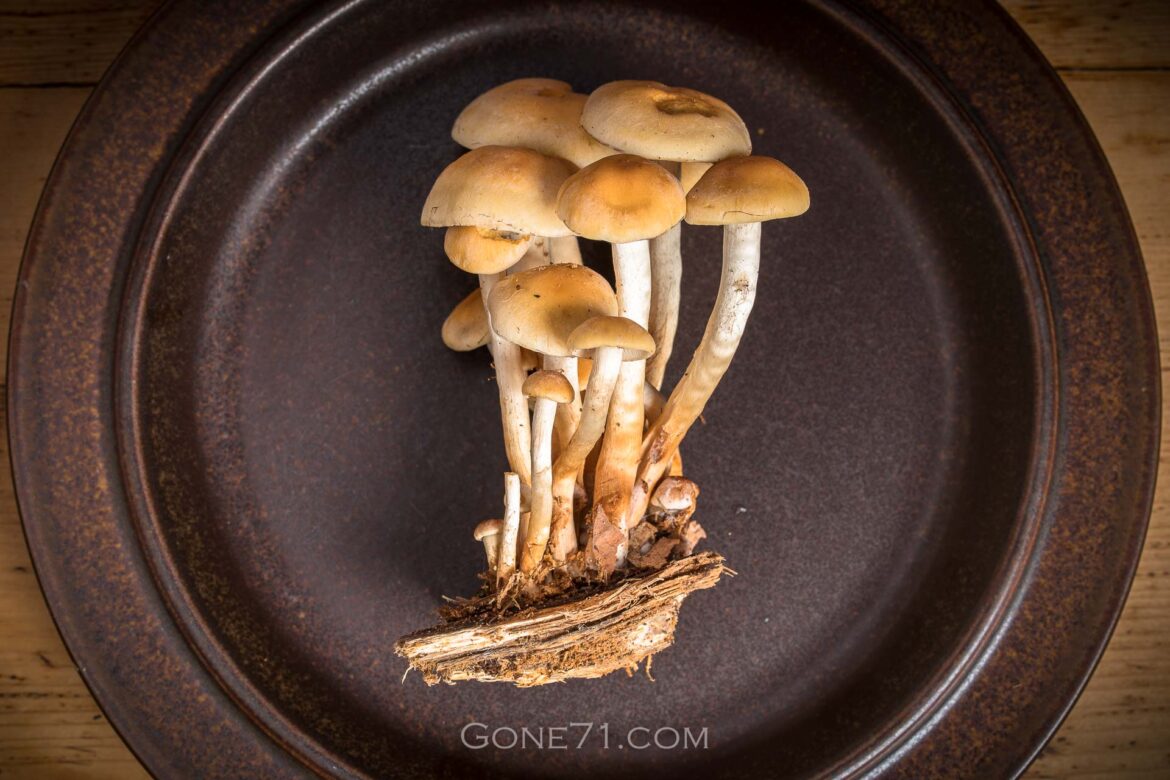swe.: Rökslöjskivling | nor.: Vanlig Svovelsopp | fin.: Kuusilahokka | dt.: Rauchblättriger Schwefelkopf, Graublättriger Schwefelkopf
The Conifer Tuft mushroom also known as smoky-gilled woodlover is a mushroom for experienced mushroom pickers. Most foragers need years to get to grips with these mushrooms. Once you know all the potential confusion partners and can clearly assign the identification characteristics, this is for many one of the best edible mushrooms ever. A shortcut to save yourself the uncertainty of identification is to cultivate this mushroom yourself.

Appearance and habitat of the conifer tuft
The Conifer Tuft has a yellow-brown or ochre-brown cap with a smooth cap top. The edge of the cap is usually a little lighter and may still have velum remains. The stem is dirty-white to yellow-white and becomes darker (brown) towards the base. The flesh is also whitish to yellowish.
One of the most important characteristics of this mushroom is the colour of the gills, which distinguishes it from some doppelgangers. In Conifer Tuft, the gills are grey – yellow or green colours may never be visible in any form!
As the name suggests, the occurrence is limited to coniferous wood, e.g. tree stumps of pine, spruce, Douglas fir and others. It is usually found in clusters or large groups. In central Europe this mushroom usually only grows in autumn.
Only harvest mushrooms that you can identify with 100% certainty! The consequences can be life threatening if you are wrong. If you have the slightest doubt: do not eat the mushroom! This is not a mushroom guide! For correct identification consult a mushroom expert.

diameter cap: 1–8 cm
months: (late) autumn
colours: yellow-brown or ochre-brown cap, grey gills
habitat: coniferous trees
taste (raw): mild
consumption: cooked
Confusing the Conifer Tuft with other species
If you want to collect this mushroom, you should know very well about potential confusion possibilities. The two most important poisonous doppelgangers are the sulphur tuft (H. fasciculare) and the brick caps (H. lateritium). Both species belong to the same genus and are closely related. The sulphur tuft, in particular, is much more common and can look confusingly similar to the conifer tuft.

Distinction between Coniver Tuft, Sulphur Tuft, Brick Caps
Conifer tuft (H. capnoides)
- Yellow-brown cap, grey gills, mild pleasant taste, smell of rubber (car tyres), marzipan (prussic acid). Never green or yellow colours in the gills. No red tones in the cap. Conifer Tuft usually grows only in late autumn and allmost exclusively on coniferous wood (!).

Sulphur Tuft (H. fasciculare)
- Usually the cap rims are sulphur yellow and the centre ochre to reddish brown. The tip of the stem can often be bright neon yellow (not with Conifer Tuft!). The gills are usually green to greenish-yellow when young, but can also be brownish or grey when old. A slight yellow tinge is usually still present in some form. The taste is strongly bitter, the smell rather faintly unpleasant. Grows from spring to late autumn and is much more common than the other two species.
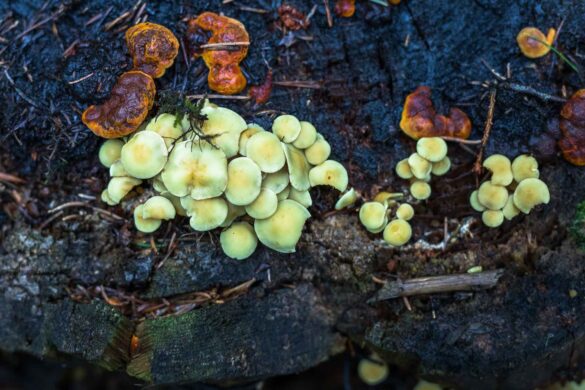

Brick caps (H. lateritium)
- Also known under the names chestnut mushroom, cinnamon caps, brick top, red woodlover or kuritake.
Commonly, brick caps also have grey gills in older stages. Younger specimens usually have yellow to yellow-brown lamellae. However, their cap tops are much more reddish, usually brick red to brown in the centre and yellowish on the outside, hence the name. The smell is pleasant, the taste slightly bitter but not as bitter as the sulphur tuft. Brick caps grow almost exclusively on dead hardwood (!) from spring to autumn.
–> In North America and Asia this mushroom is considered edible and even cultivated to our knowledge. It is very probable that this is a different species or variety.
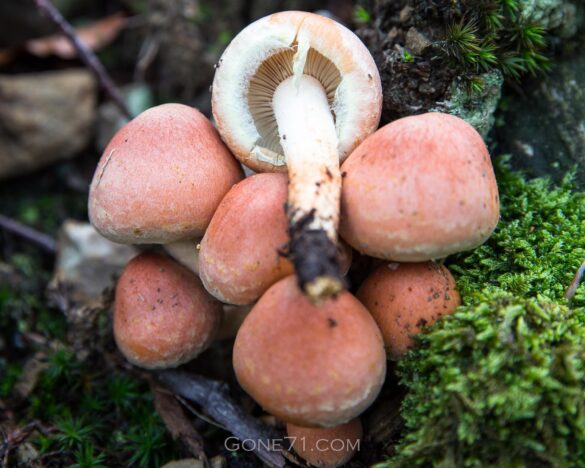
Be carefull with a taste test!
A professional mycologist once suggested a taste test to me to distinguish between these different species of Hypholoma, as the Conifer Tuft has a pleasant and not bitter or pungent taste. Of course, this presupposes that Hypholoma can be clearly recognised as such and to be clear – we do not recommend this to anyone! In case of confusion with other mushrooms such as the funeral bell (G. marginata), even a taste test can lead to severe poisoning and organ (liver) damage. Among other things, one should therefore never taste mushrooms that grow on wood and have brown lamellae!
Due to the involved risk of confusion, the often rare occurrence and the small size some authors regard it as not worth collecting for food purposes at all.
But we also know people for whom this mushroom is one of the best edible mushrooms ever. In any case, this is certainly not a mushroom for novice mushroom hunters. There is a work around though.
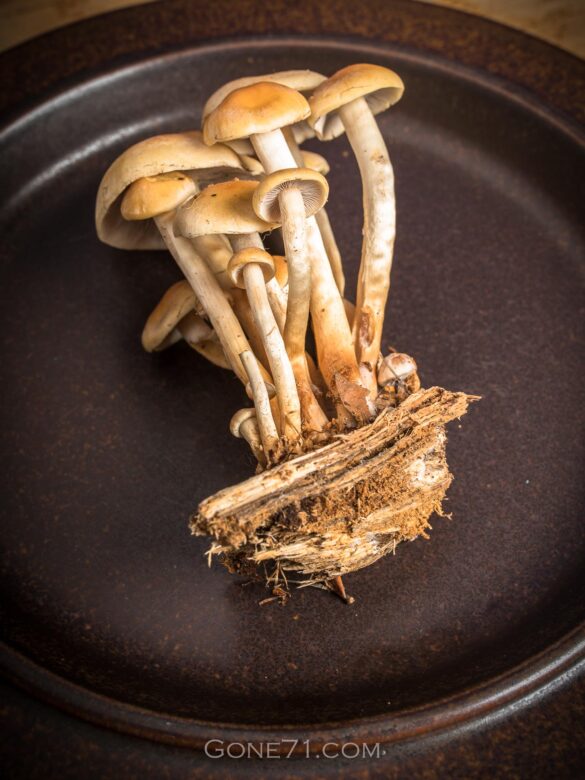
Cultivating Conifer Tuft
For interested mushroom enthusiasts who do not want to collect this mushroom themselves due to a lack of knowledge and/or availability and still want to try it, we have good news. The Conifer Tuft can also be cultivated. There are numerous suppliers on the Internet who can provide you with fresh mycelium or mushroom plugs. So if you happen to have a few conifer stumps in your garden, or a suitable basement you can also cultivate Conifer Tuft yourself.
Conifer Tuft (H. capnoides) in the kitchen
Those who finally have perfectly identified specimens in the kitchen can happily prepare a delicious mushroom dish. In our opinion, this mushroom does particularly well in mushroom pans and sauces. If you have enough of it, it is best to use it as a single variety. Of course, it works well as a mixed mushroom too.
Conifer Tuft is also suitable for drying. Very young specimens can be dried together with the stem but as they grow older, the stem gets realy tough and we remove it.
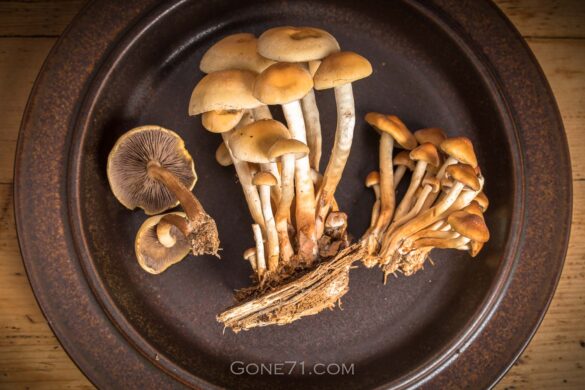
We have compiled this overview with the best of knowledge and belief, but do not claim to be complete and reserve the right to make errors.
Learn more about poisonous mushrooms and mushroom poisons here
↓↓↓
Find some inspiration in other mushroom recipes
↓↓↓


